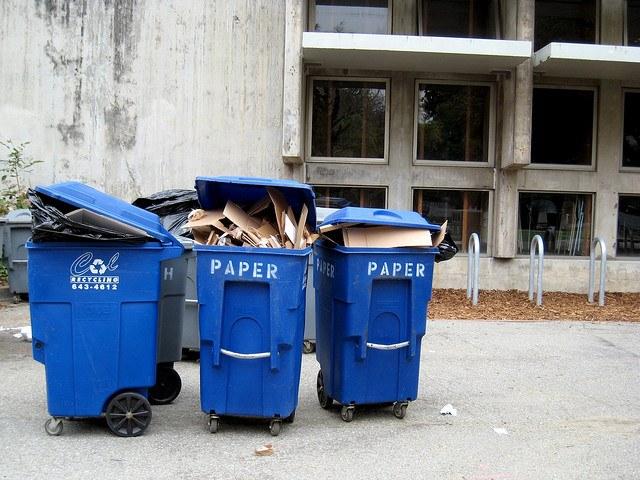
By Greg Stanton and Michael M. Crow
In his New York Times opinion piece from Oct. 3, John Tierney marginalizes the environmental benefits of recycling and waste diversion when he posits that recycling a great number of manufactured and organic materials has no economic rationale. Mr. Tierney also claims that recycling practices could lead to a perceived elimination of jobs in “communities that have accepted the environmental trade-offs that come with those jobs.”
As leaders of the sixth largest city in the U.S. and the nation's largest university, respectively, we not only find Mr. Tierney's assertions faulty, but we also contend that they are based on an obsolete economic model that ignores a material's full cycle of extraction, production, consumption and potential for reuse.
By focusing only on end-use, Mr. Tierney completely ignores the fact that planetary resources are limited. The United Nations predicts: “Should the global population reach 9.6 billion by 2050, the equivalent of almost three planets could be required to provide the natural resources needed to sustain current lifestyles.” Accordingly, one of the recently released Sustainable Development Goals is to “ensure sustainable consumption and production patterns.”
Unless we find ways to reuse waste and design our products and packaging to optimize material use, we will not meet the economic and social needs of a growing population. Enlightened institutions are working together to optimize financial, social and environmental resources by re-imagining an entire system based on a circular economy model, not merely harvesting economic rewards at end-of-use.
For example, Arizona State University (ASU) and the city of Phoenix are creating an economic development strategy around waste recovery. Each year, Phoenix waste collection vehicles travel more than 7 million miles to collect trash from residents – equivalent to going to the moon and back 14 times. Phoenix is committed to reaching a 40 percent waste diversion rate by 2020 through an initiative called Reimagine Phoenix, not only to reduce environmental impact but also because the development of new products, practices and businesses using recovered materials leads to more local jobs.
Mr. Tierney argues that cities should focus on only a few material streams, namely metal and paper. Again, this ignores the true costs of production and undervalues innovations that can drive economic growth.
The last 15 years have seen a sharp increase in real prices and price volatility of natural resources, metals and non-agricultural outputs. These supply-side risks impact product prices for consumers. If participants in the value chain were required to cover the true costs of their activities, the value of recycled materials would balloon overnight.
All of these trajectories suggest that we need to reduce our resource consumption by at least 75 percent, as was predicted in 1995 by environmental economists and scientists L. Hunter Lovins, Amory Lovins and Ernst von Weizsäcker. The current industrial model that ties business growth to the availability of “inexpensive” virgin materials is linear. We extract, process, manufacture, distribute, use and dispose. This model is not sustainable.
Because we are responsible for ensuring well-being for future generations, ASU’s Walton Sustainability Solutions Initiatives and the city of Phoenix are working together to re-imagine resources. Our goal is to create jobs, new businesses and tax revenue, all while reducing our environmental impact and diverting materials from area landfills. By design, we intend to reduce reliance on virgin materials and maximize their value for as long as possible.
Our future is at risk. We intend to answer the question Mr. Tierney posed at the end of his article and demonstrate how to build a sustainable city with a strategy that CAN sustain itself.
Image credit: Flickr/John Lambert Pearson
Greg Stanton is Mayor of the city of Phoenix.
Michael M. Crow is President of Arizona State University.
TriplePundit has published articles from over 1000 contributors. If you'd like to be a guest author, please get in touch!














